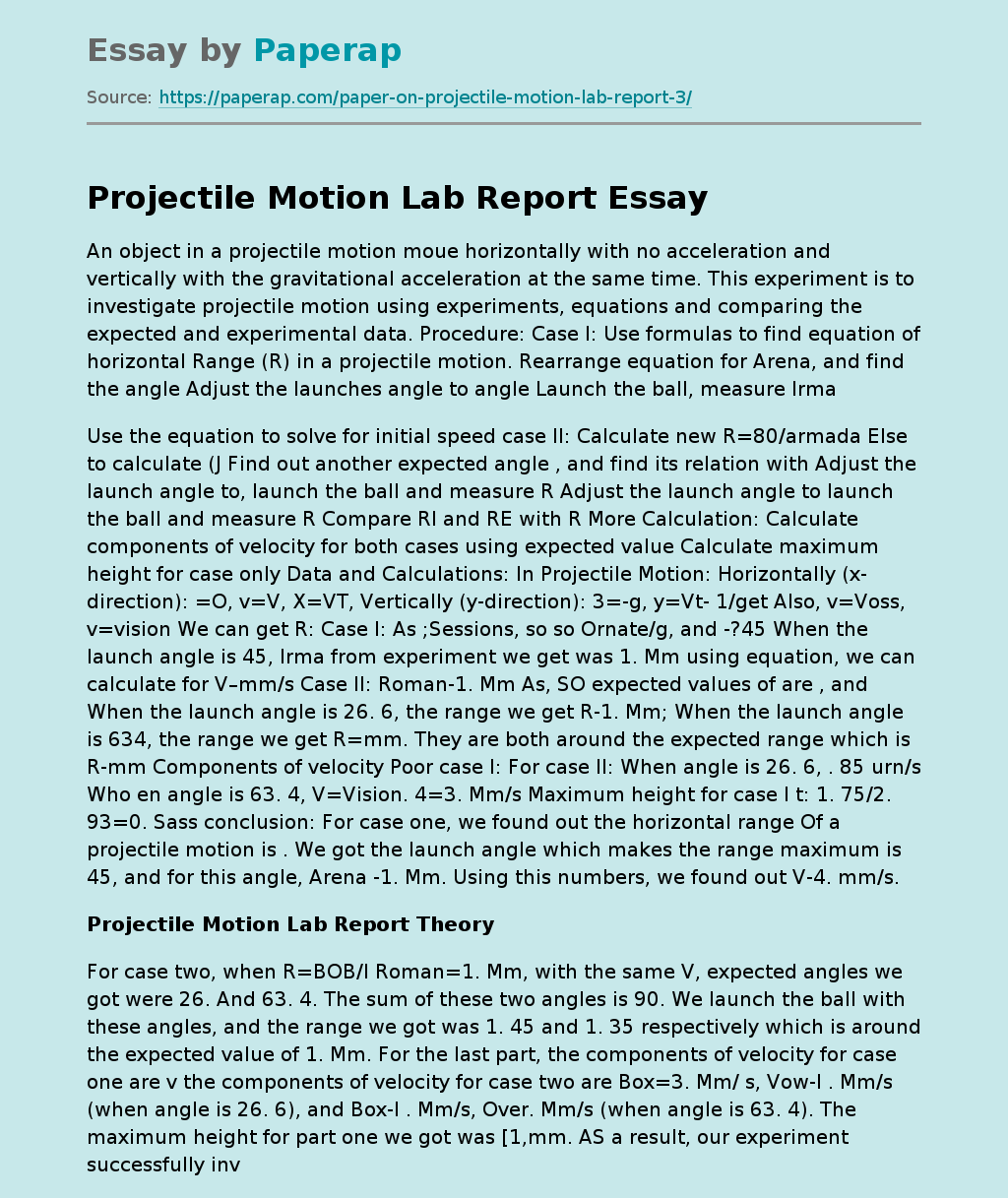Simultaneous horizontal and vertical motion in projectile
An object in a projectile motion moue horizontally with no acceleration and vertically with the gravitational acceleration at the same time. This experiment is to investigate projectile motion using experiments, equations and comparing the expected and experimental data. Procedure: Case I: Use formulas to find equation of horizontal Range (R) in a projectile motion. Rearrange equation for Arena, and find the angle Adjust the launches angle to angle Launch the ball, measure Irma
Use the equation to solve for initial speed case II: Calculate new R=80/armada Else to calculate (J Find out another expected angle , and find its relation with Adjust the launch angle to, launch the ball and measure R Adjust the launch angle to launch the ball and measure R Compare RI and RE with R More Calculation: Calculate components of velocity for both cases using expected value Calculate maximum height for case only Data and Calculations: In Projectile Motion: Horizontally (x-direction): =O, v=V, X=VT, Vertically (y-direction): 3=-g, y=Vt- 1/get Also, v=Voss, v=vision We can get R: Case l: As ;Sessions, so so Ornate/g, and -?45 When the launch angle is 45, Irma from experiment we get was 1.
Mm using equation, we can calculate for V–mm/s Case II: Roman-1.
Mm As, SO expected values of are , and When the launch angle is 26.
6, the range we get R-1. Mm; When the launch angle is 634, the range we get R=mm. They are both around the expected range which is R-mm Components of velocity Poor case l: For case II: When angle is 26. 6, . 85 urn/s Who en angle is 63. 4, V=Vision. 4=3. Mm/s Maximum height for case I t: 1. 75/2. 93=0. Sass conclusion: For case one, we found out the horizontal range Of a projectile motion is . We got the launch angle which makes the range maximum is 45, and for this angle, Arena -1. Mm. Using this numbers, we found out V-4. mm/s.
Projectile Motion Lab Report Theory
For case two, when R=BOB/I Roman=1. Mm, with the same V, expected angles we got were 26. And 63. 4. The sum of these two angles is 90. We launch the ball with these angles, and the range we got was 1. 45 and 1. 35 respectively which is around the expected value of 1. Mm. For the last part, the components of velocity for case one are v the components of velocity for case two are Box=3. Mm/ s, Vow-l . Mm/s (when angle is 26. 6), and Box-l . Mm/s, Over. Mm/s (when angle is 63. 4). The maximum height for part one we got was [1,mm. AS a result, our experiment successfully investigated the projectile, and the occurrence of small random error is acceptable.
Simultaneous horizontal and vertical motion in projectile. (2019, Dec 05). Retrieved from https://paperap.com/paper-on-projectile-motion-lab-report-3/

